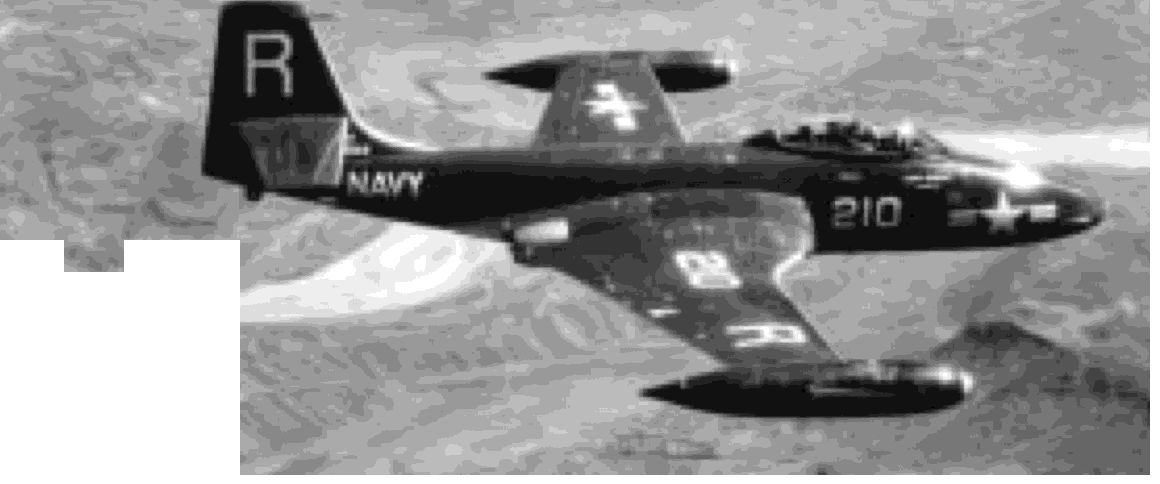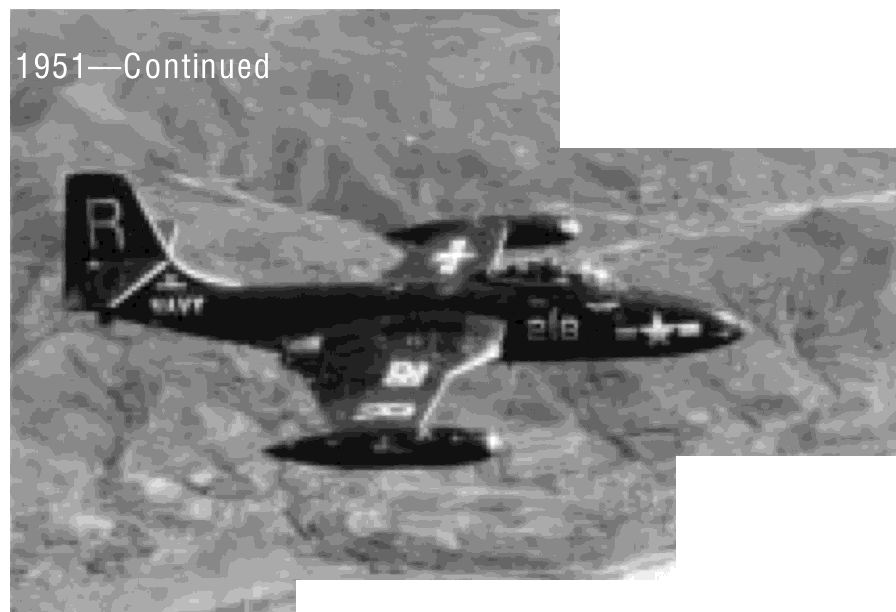

" .
,",'
.1'1
.,
.
-
,
--
UNITED STATES NAVAL AVIATION
1910-1995
193
.Y
--
"
F2H Banshees from Essex seek out North Korean targets
433959
and supply missions for the First Marine Division. On
13 September it began its support of the First Marine
Division with Operation Windmill 1. In this initial com-
bat test of transport helicopter capabilities, the
squadron lifted one day's supplies for the First Marine
Battalion on a seven-mile carry from its base to the
forward area.
7 September
In its first shipboard launching, a Terrier
surface-to-air missile was fired from
Norton Sound
and
simulated an interception of an F6F target drone.
15 September
The Department of Defense Joint
Parachute Test Facility, consisting of Navy and Air
Force parachute units, was established under the man-
agement control of the Bureau of Aeronautics at NAAS
El Centro, Calif.
21 September
As activity on the front quieted down
and the lines remained fairly stable, the Fast Carrier
Task Force was relieved of its close air support duties
and ordered to concentrate its attack on railroad tracks
as a part of the interdiction program.
3 October
HS-l, first of its kind in the Navy, was
established under the command of Commander
Joseph T. Watson, Jr. at NAS Key West, Fla.
6 November
A Neptune patrol bomber of VP-6
failed to return from a weather reconnaissance mission
over international waters off Siberia after Soviet planes
fired upon it.
1 December
The U.S. Naval Aviation Safety Activity
was established at Norfolk, Va., under the Chief of
Naval Operations to promote the aviation safety pro-
gram and to direct specific effort toward maintaining
the highest practicable level of aviation safety through-
out the Navy. In April 1955, this activity was redesig-
nated the Naval Aviation Safety Center.
11 December
ATG-l, operating from
Valley Forge,
flew its first combat mission, attacking coastal rail lines
and bridges in northeast Korea. This was the first of
the ATGs formed after experience in Korea had
demonstrated that five squadrons then in Carrier Air
Groups could not be operated effectively in combat
from
Essex
class carriers. Temporary withdrawal of one
squadron from each group scheduled for deployment
provided the units from which ATGs were formed.
These temporary groups, which were not formally
established and existed from 1951 to early 1959. As
many as eight were in existence by 1955.
12 December
The Kaman K-225 helicopter,
equipped with a Boeing YB-502 turbine engine, made
its first flight at Windsor Locks, Conn. This Navy-spon-
sored development was the first demonstration of the
adaptability of gas-turbine engines to helicopters.
19 December
A test of emergency assembly capabil-
ities with nuclear weapons was conducted aboard
Philippine Sea
at San Diego, Calif., marking the initial
and successful introduction of special weapons in the
Pacific fleet.
1952
4 January
The new classifications CAG and CLG
were established for heavy and light cruiser guided
missile ships and
Boston
(CA 69) and
Canberra
(CA 70)
were changed to (CAG 1) and (CAG 2), respectively.
1 February
The Chief of Naval Operations ap-
proved a modification of the Project 27 A carrier con-
version program which provided an increase in the
capacity of deck operating equipment. Changes
included use of more powerful arresting gear, higher
performance catapults and a replacement of the num-
ber three centerline elevator with a deck-edge type of
greater capacity. Conversion of three
Essex
class carri-
 |
11 |
 |